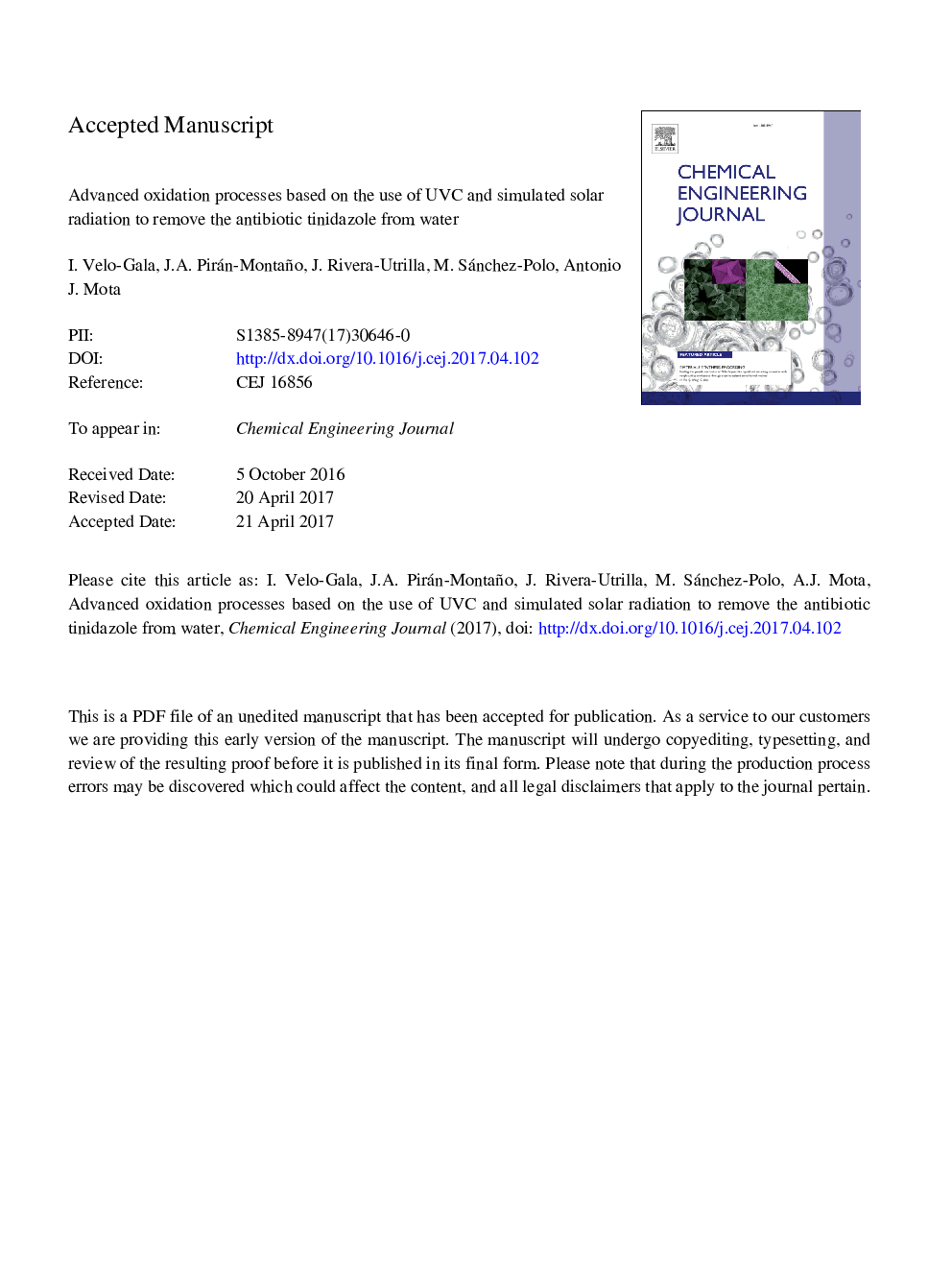| Article ID | Journal | Published Year | Pages | File Type |
|---|---|---|---|---|
| 4763068 | Chemical Engineering Journal | 2017 | 42 Pages |
Abstract
The objective of this study was to analyse the effectiveness of different Advanced Oxidation Processes based on solar and ultraviolet C radiation to remove the antibiotic tinidazole (TNZ) from water. Specifically the systems studied were: UVC, solar radiation, UVC/H2O2, solar/H2O2, UVC/K2S2O8, solar/K2S2O8, UVC/photo-Fenton and solar/photo-Fenton. Some aspects of these processes such as the degradation percentage of TNZ, its mineralisation degree, and the degradation products, were analysed. The direct photodegradation of TNZ showed low yields, with a removal percentage lower than 50%. With the UVC/H2O2 system, the percentage of TNZ degraded increased with the H2O2 concentration, but when solar radiation was used, the addition of H2O2 did not favour the process efficiency. The UVC/K2S2O8 system was more efficient than UVC/H2O2 for TNZ degradation. The presence of K2S2O8 in the solar photodegradation also enhanced TNZ degradation in comparison to the direct photolysis process. In the photo-Fenton systems, for both UVC and solar radiations, high levels of TNZ degradation and mineralisation were obtained. Therefore, the photo-Fenton systems are the most recommended to treat water contaminated with TNZ. Some clues of the mineralisation process appear from the degradation products detected by means of coupled ultra-pressure liquid chromatography and high-resolution mass spectrometry.
Related Topics
Physical Sciences and Engineering
Chemical Engineering
Chemical Engineering (General)
Authors
I. Velo-Gala, J.A. Pirán-Montaño, J. Rivera-Utrilla, M. Sánchez-Polo, Antonio J. Mota,
